RESTORATION & CONSERVATION SERVICES | DECORATIVE ARTS & OBJECTS | BRONZE RESTORATION
Bronze Restoration
“Just wanted to say a huge thank you on behalf of the Stanley Picker Trust for all your help and hard work in getting the artwork cleaned and safely back to us in the gallery. It looks amazing and we’re all so pleased to see it in its rightful place once again.”
In addition to restoring sculpture made from bronze, we restore many decorative arts objects, which are made either wholly from bronze and spelter, or which feature bronze and spelter elements.
Techniques include brazing, soldering and welding, cleaning, filling losses and recasting replica elements, as well as waxing, retouching and repatinating surface finishes.
Our expertise in gilding and replicating specialist metal finishes, including the patination found on ancient Islamic bronzes, has led to our bronze restoration team taking on numerous conservation and restoration projects throughout the Middle East, as well as providing consultancy services for museums located in the region.
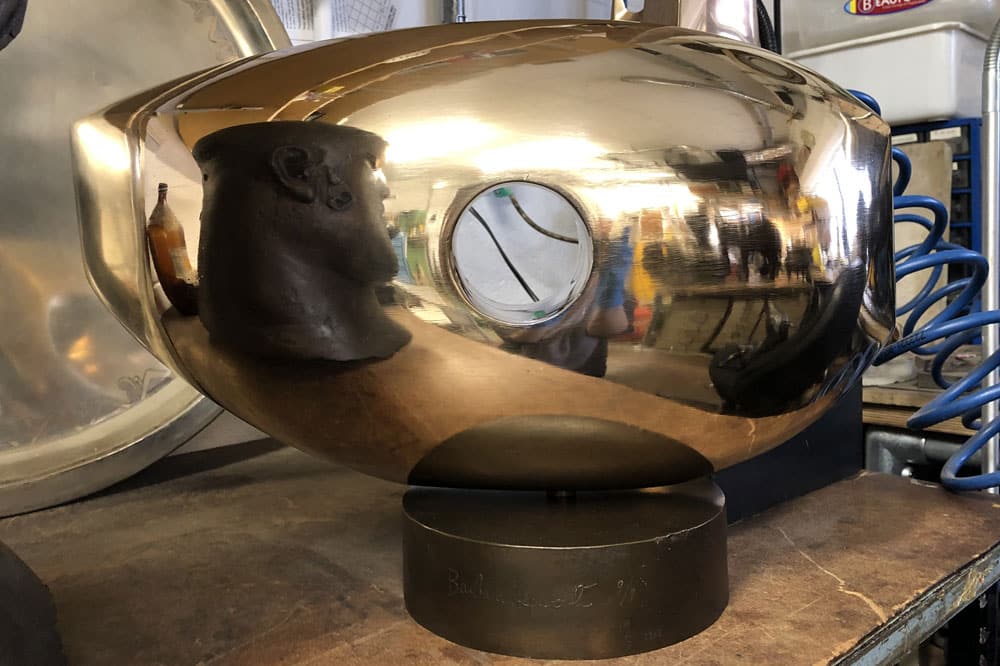
Barbara Hepworth’s Horizontal Form polished bronze sculpture, shown after treatment in our Sculpture Restoration studio
Bronze Restoration Case Studies
Japanese Crane and Turtle Bronze Restoration
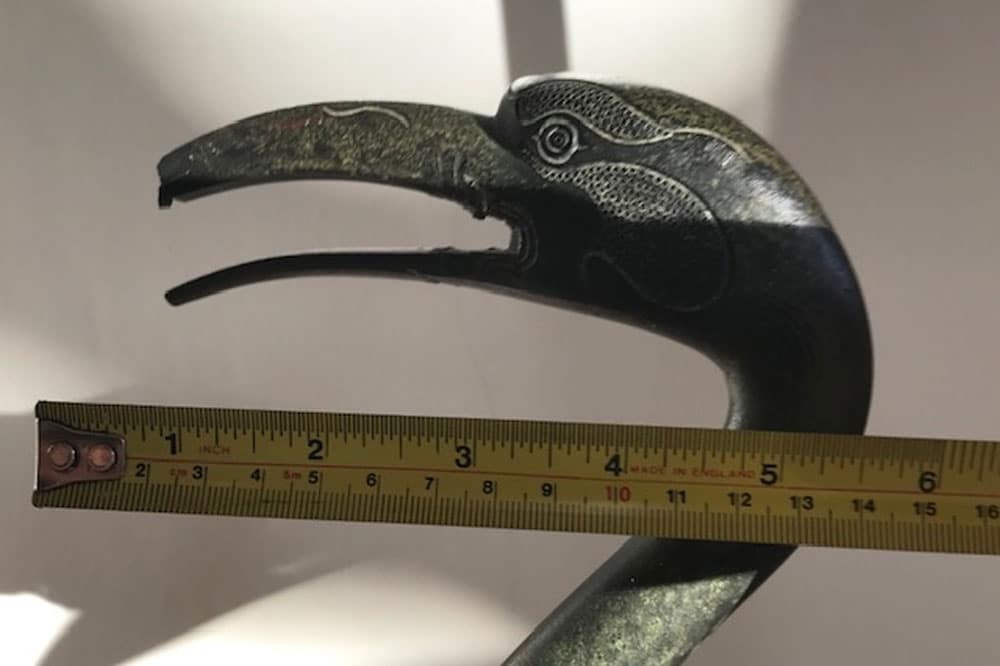
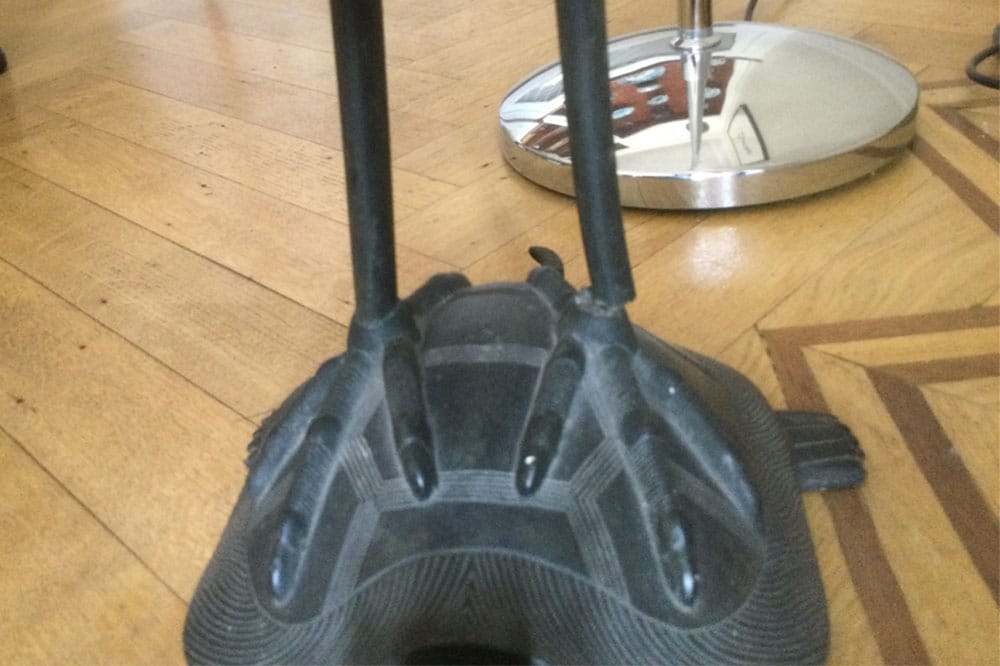
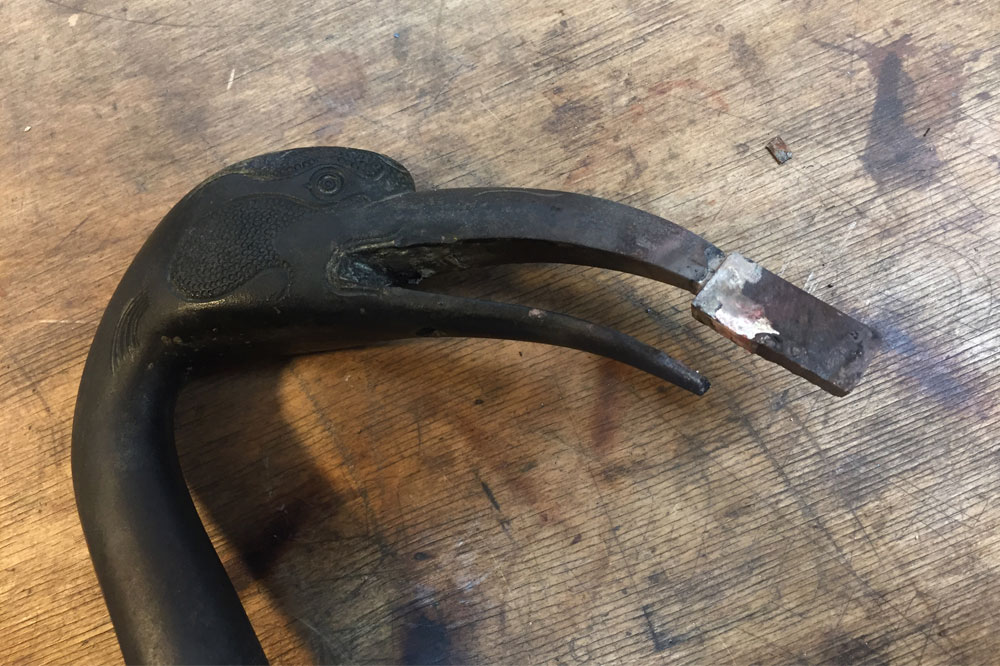
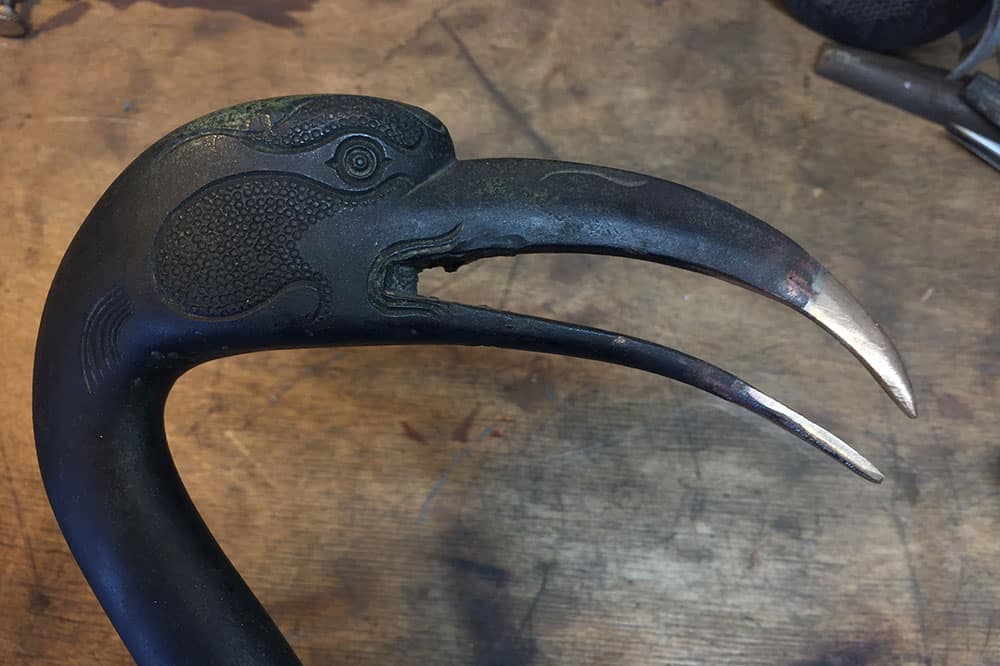
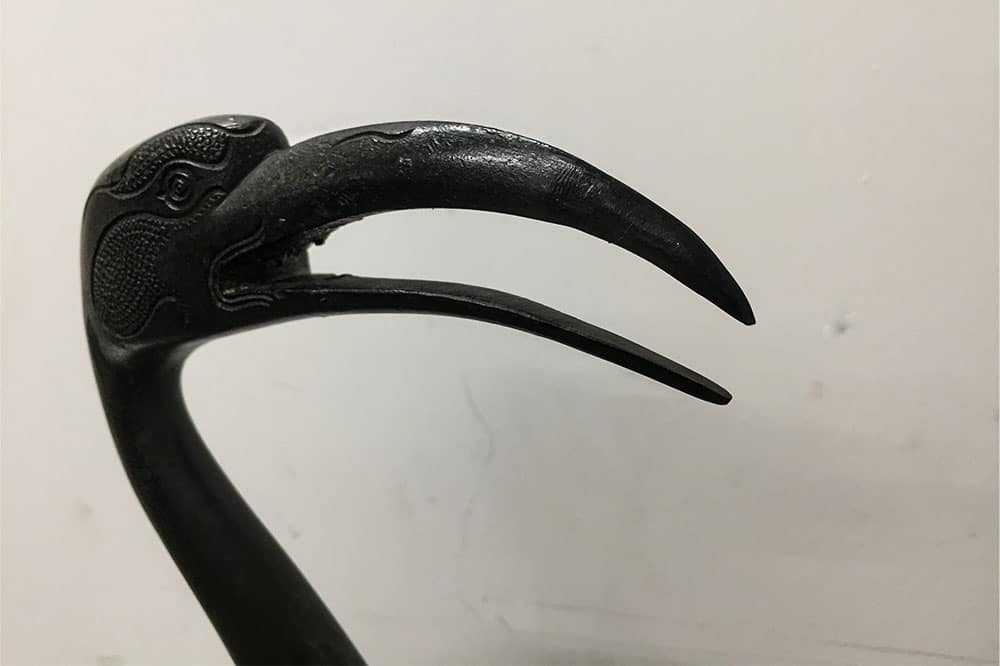
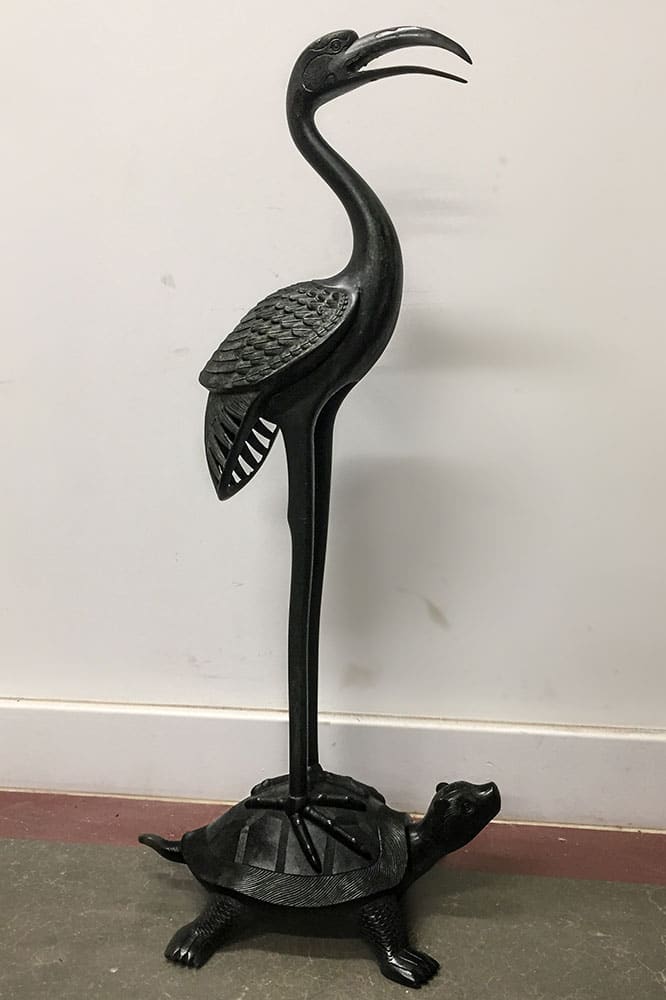
This Japanese bronze crane and turtle sculpture is a possible reference to the Japanese saying that “cranes live for one thousand years, and turtles for ten thousand.”
The bronze sculpture came into our bronze restoration studio with what may have been impact-related damage. The tip of the crane’s bronze beak was missing, and one of its legs had snapped, leaving a small section of leg behind in a fixing hole in the turtle’s shell.
Upon inspection in our bronze restoration workshop, our restorer discovered the remnant of an old join in the crane’s beak, indicating that the bronze beak may either have been fabricated from two parts, or it may have historically broken and been previously restored.
To restore the snapped crane’s leg, our bronze restorer first had to remove the intact leg and broken leg-end from the shell of the turtle. This was achieved by desoldering the joins (effectively by heating the existing lead solder to turn it to liquid and release the legs). Once the break edges of the broken leg had been thoroughly cleaned, it was silver soldered back together.
As the tip of the crane’s beak was missing, our bronze restorer needed to fabricate a new section of beak. This was achieved by silver soldering a block of bronze to the snapped end of the upper and lower beak. The outline of the new beak’s tip was drawn onto this block to guide our bronze restorer. Initially a grinder was used to get rid of the bulk of the unwanted new bronze. Later, when approaching the outline of the beak, our bronze restorer switched to more delicate hand files. This approach of forming the beak whilst the new material is in situ guarantees a more seamless join between the old and new sections. Liver of Sulphur was used on the restored sections to match the original patinated bronze surface.
Finally, the whole sculpture was waxed to bring out the subtle lustre of the bronze and highlight some of the cast detailing.
Spelter Sculpture Restoration
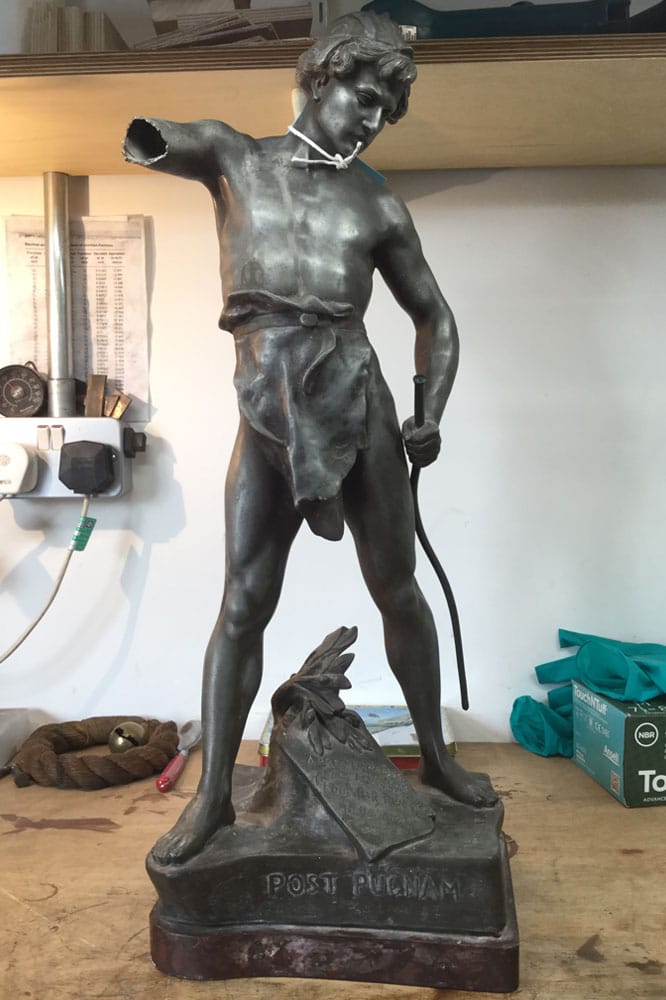
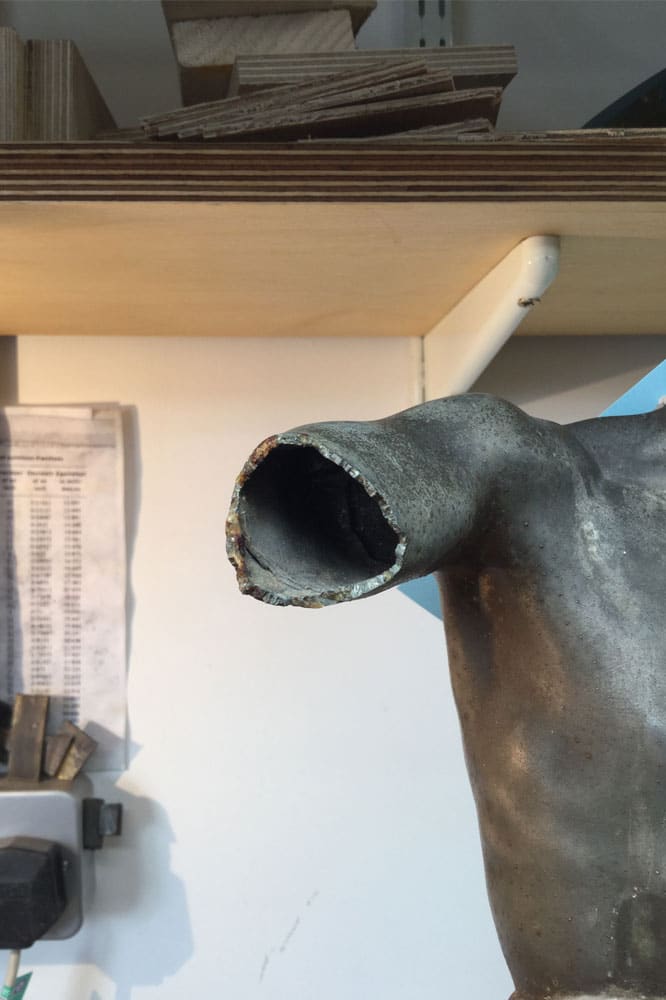
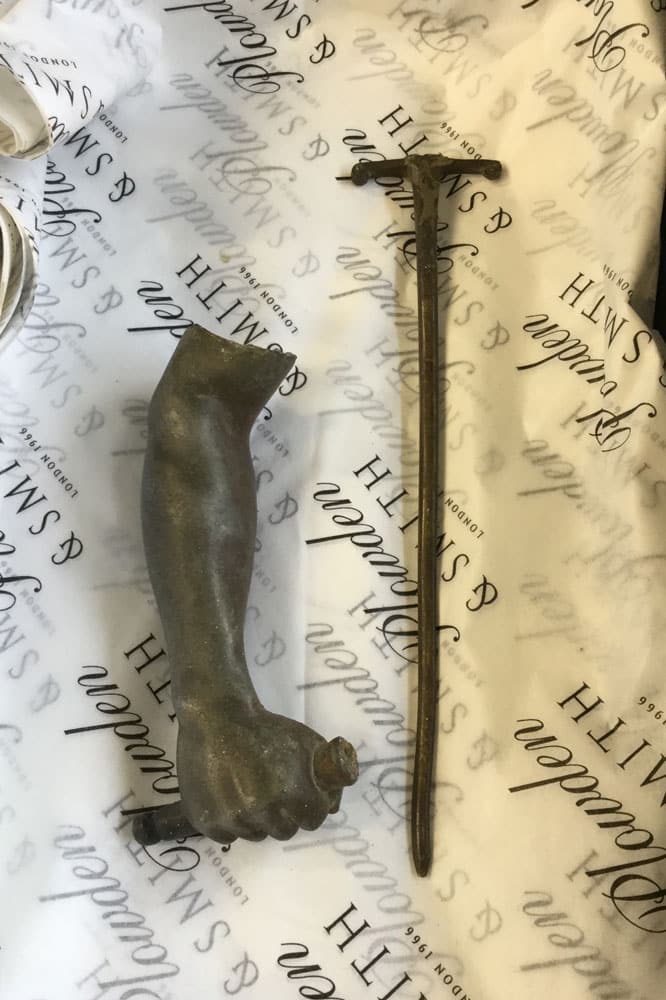

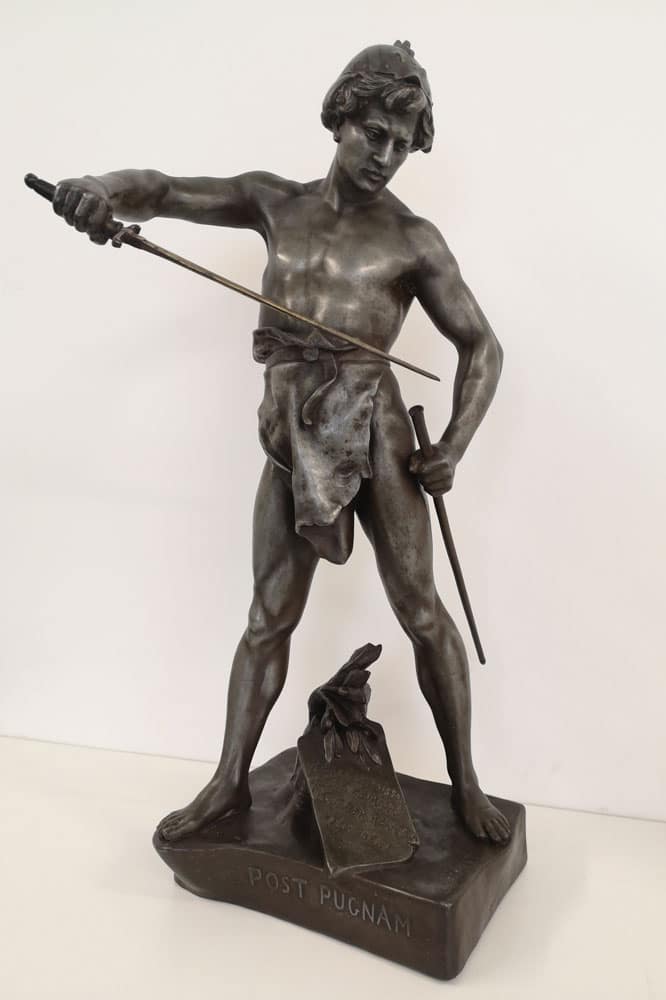
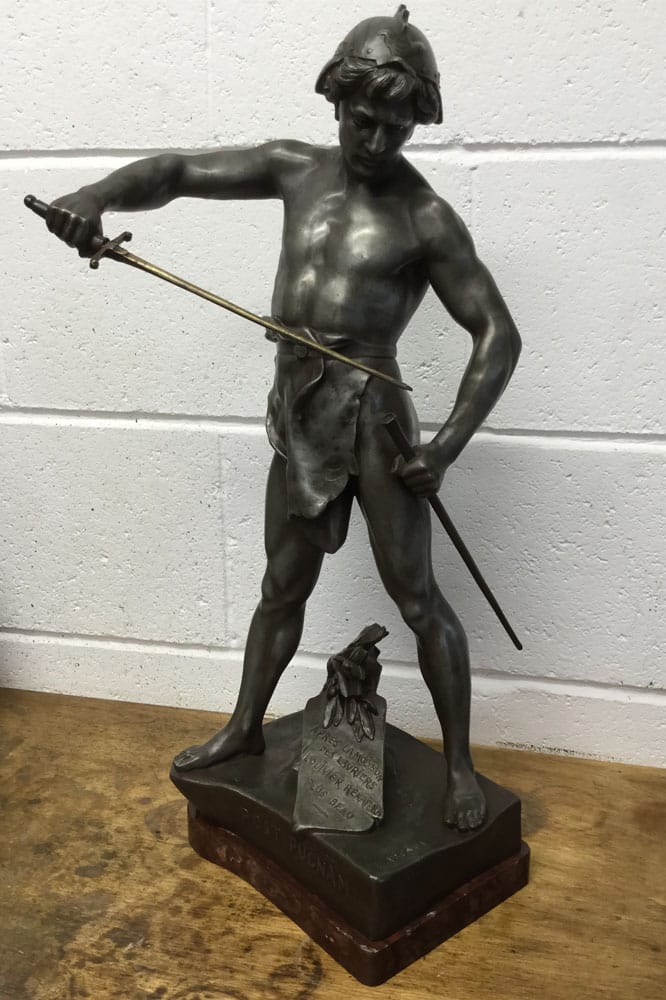
This Émile Louis Picault ‘Post Pugnam’ (‘After the Fight’) spelter sculpture was suffering from a number of war wounds when it arrived at the Plowden & Smith studios for bronze restoration treatment. A relatively soft metal, the spelter statue had a broken arm and sword as well as a bent scabbard, meaning it was in need of care and attention from a professional bronze restorer.
The restoration began with the broken arm being lead-soldered back into place; a tricky process to carry out in one smooth step. To ensure a successful result, the break edges were pre-soldered and aligned before the final heat was applied to join the prepared solder points, and secure the arm in place. The broken sword was pinned and lead-soldered into place, and the scabbard straightened.
The bonded breaks were then filled as needed and retouched with metallic pigments, using the airbrush to replicate the spattered surface effect. A final clean and an overall hot wax gave the ‘Post Pugnam’ statue a revived appearance before it was securely replaced onto its stone base.
An unusual discovery was made during the treatment of this statue. The bronze restorer investigated a strange rattling sound the piece was making, only to find that the sculpture had been filled with matchsticks! We love the interesting discoveries that can be made in bronze restoration projects, however this was certainly the first of its kind!
Contemporary Bronze Sculpture Restoration
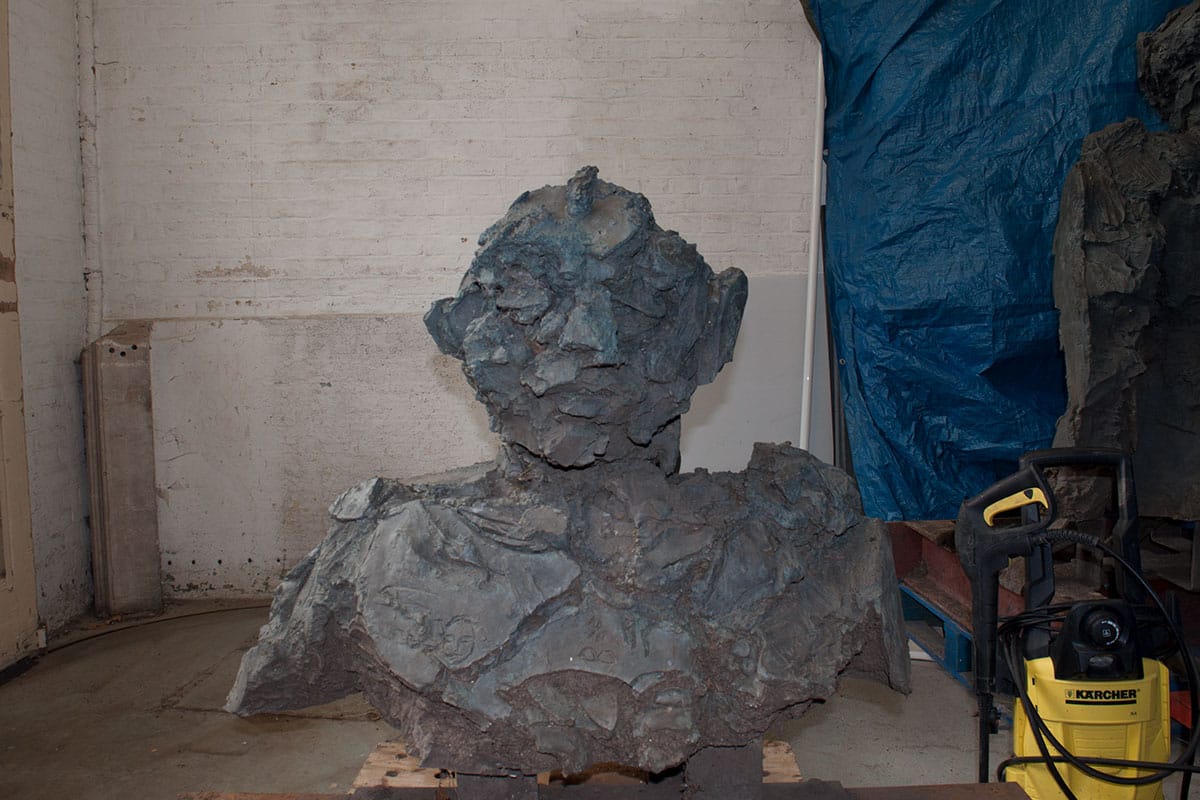
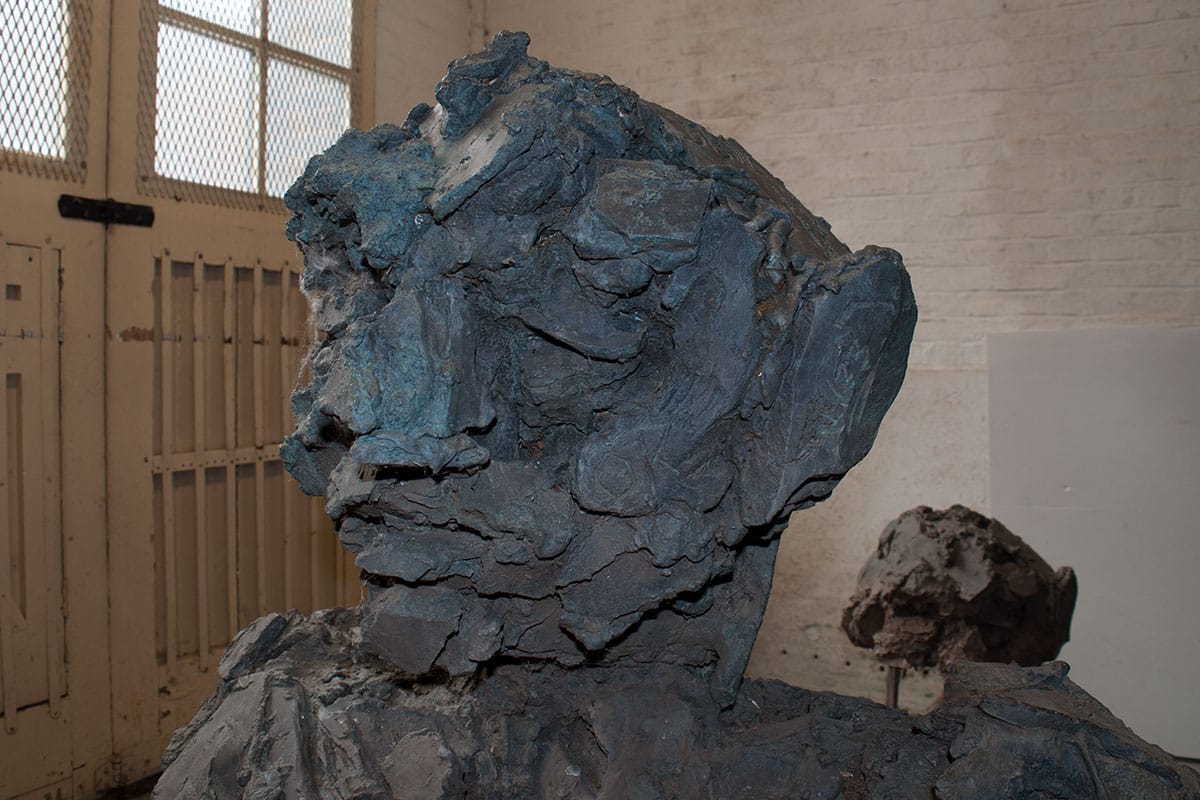
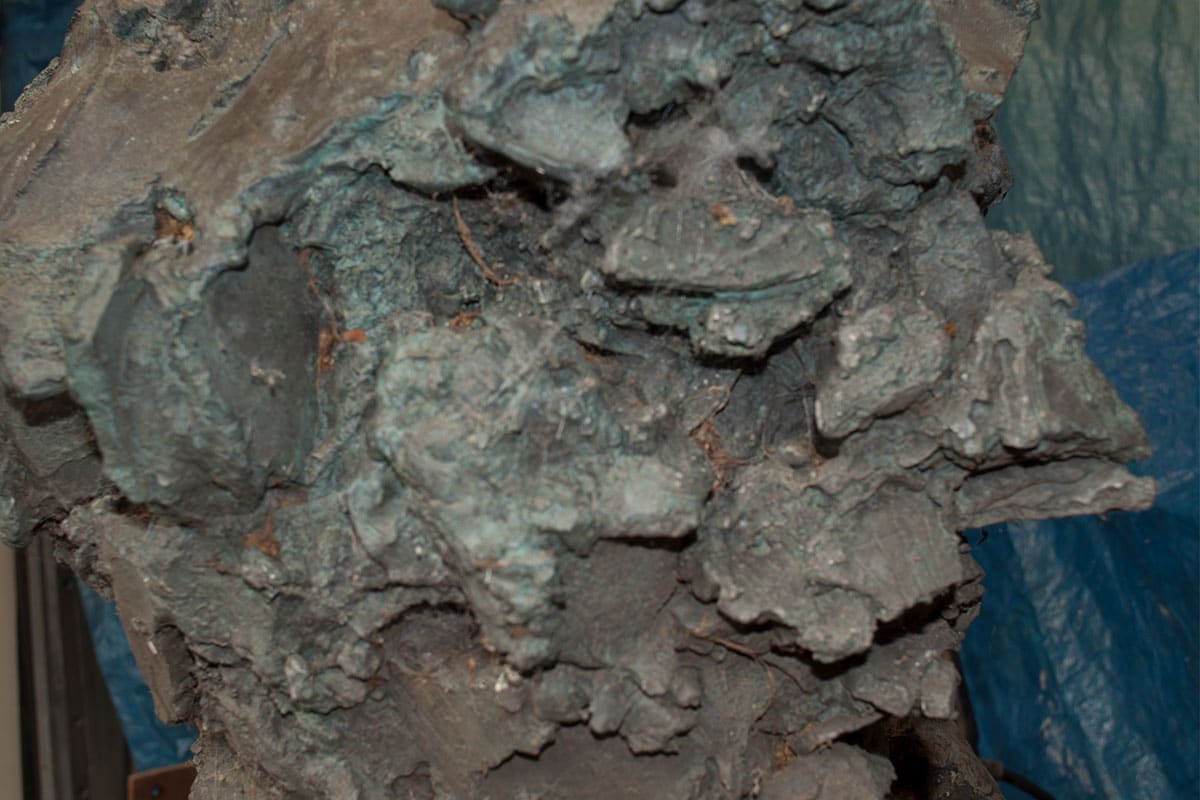
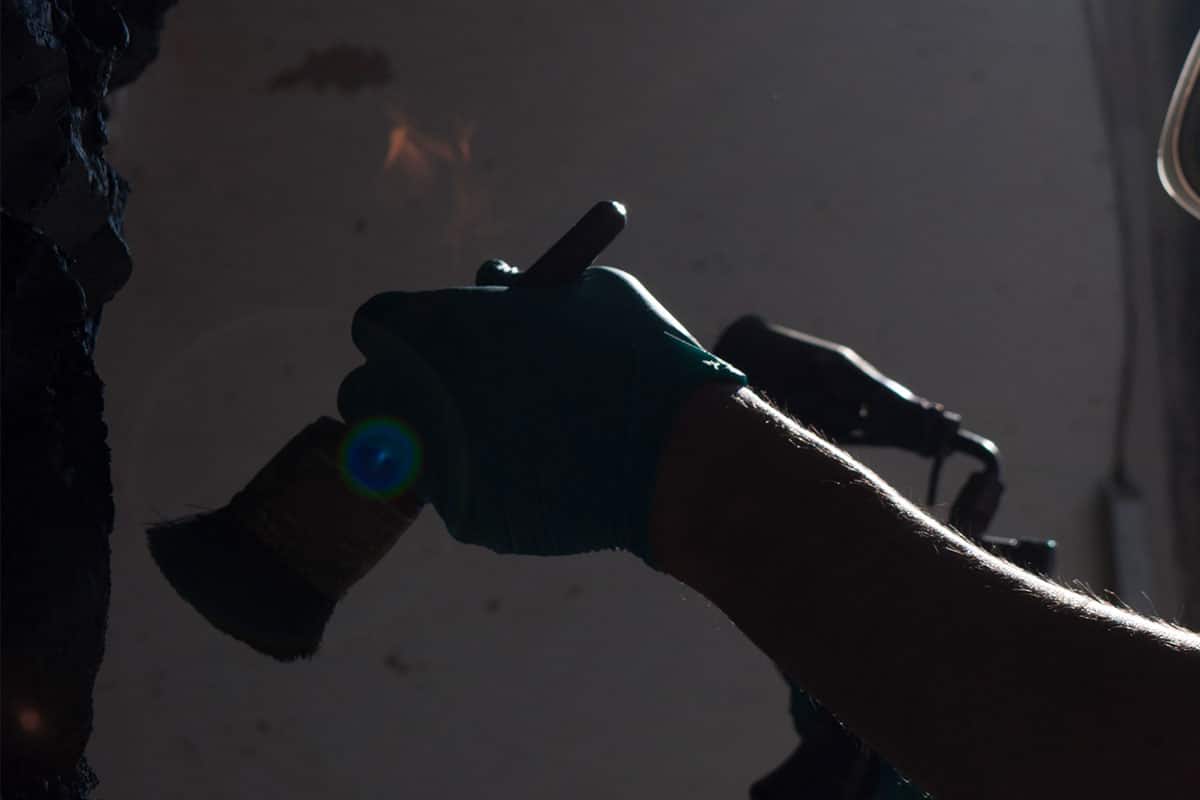
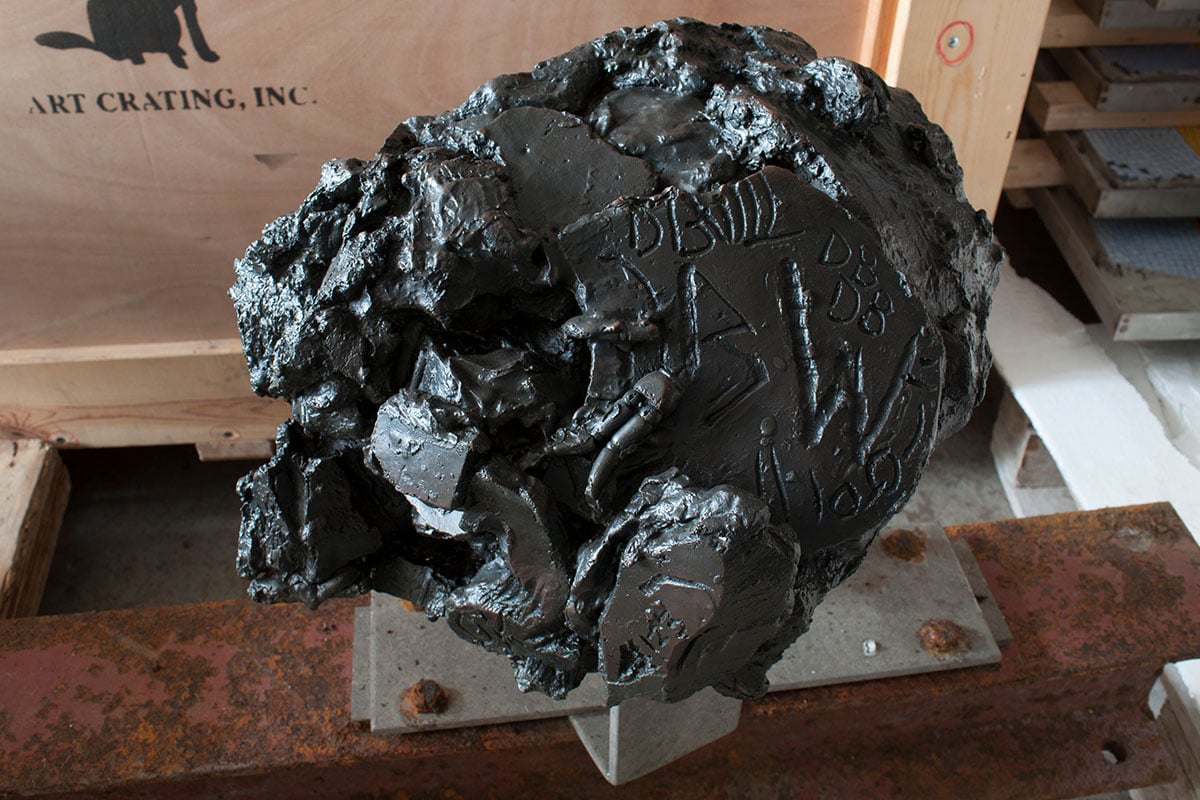
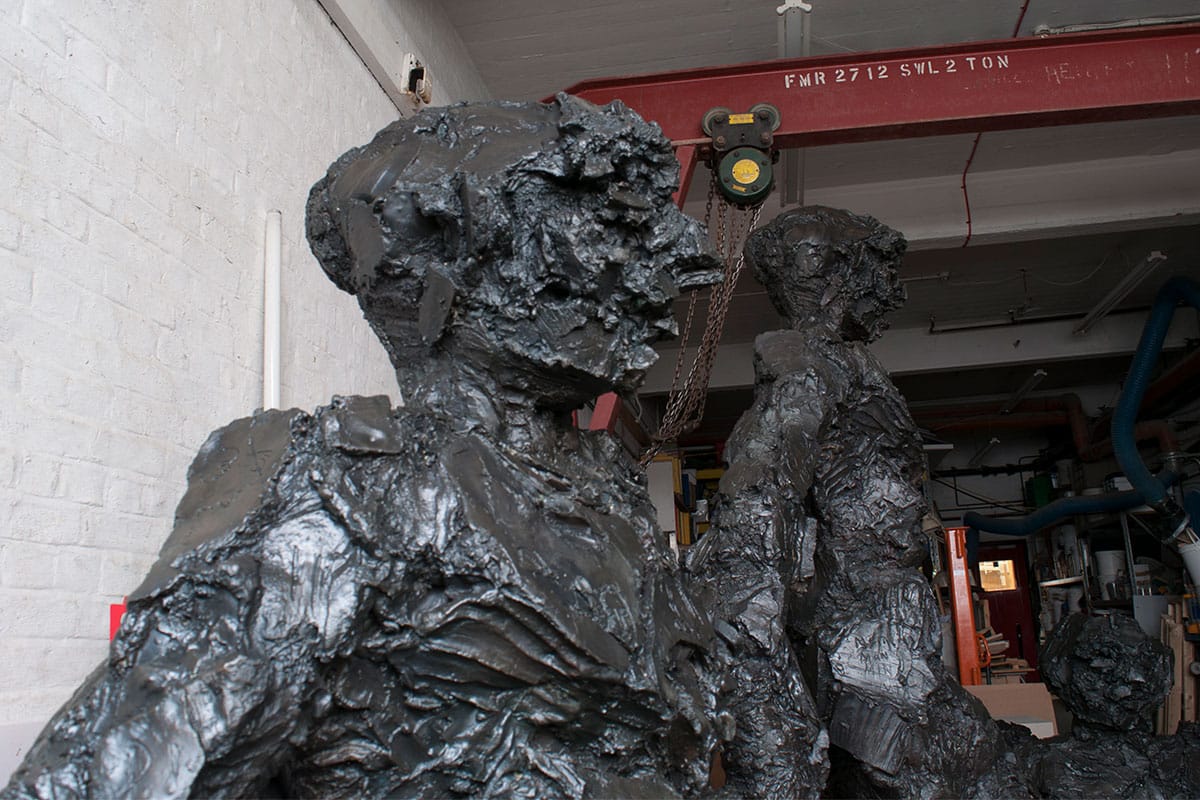
The Plowden & Smith studio is used to welcoming visitors of all ages and sizes, but David Breuer-Weil’s monumental bronze sculpture ‘Emergence’ has to be one of the largest.
Until recently, this four-part sculpture’s home has been a private square in central London and, as is the case with all outdoor sculptures, showed typical signs of weather-related wear.
Acidic rain, air pollution, and bird droppings are just some of the factors that can corrode the patination on metal sculptures. Over time, and if left untreated, this can seriously impact both the appearance and structural stability of an art work.
After a thorough conservation clean to remove all traces of dirt and debris, we applied coloured wax using a hot wax method to integrate patination loss. A final wax afterwards not only improved the overall appearance but also provided a protective barrier.
Silverdale Mining Monument – Bronze Sculpture Restoration Project
Public Statues and Sculpture Association (PSSA) Marsh Award Winner 2021 – Best Sculpture Restoration Project of the Year

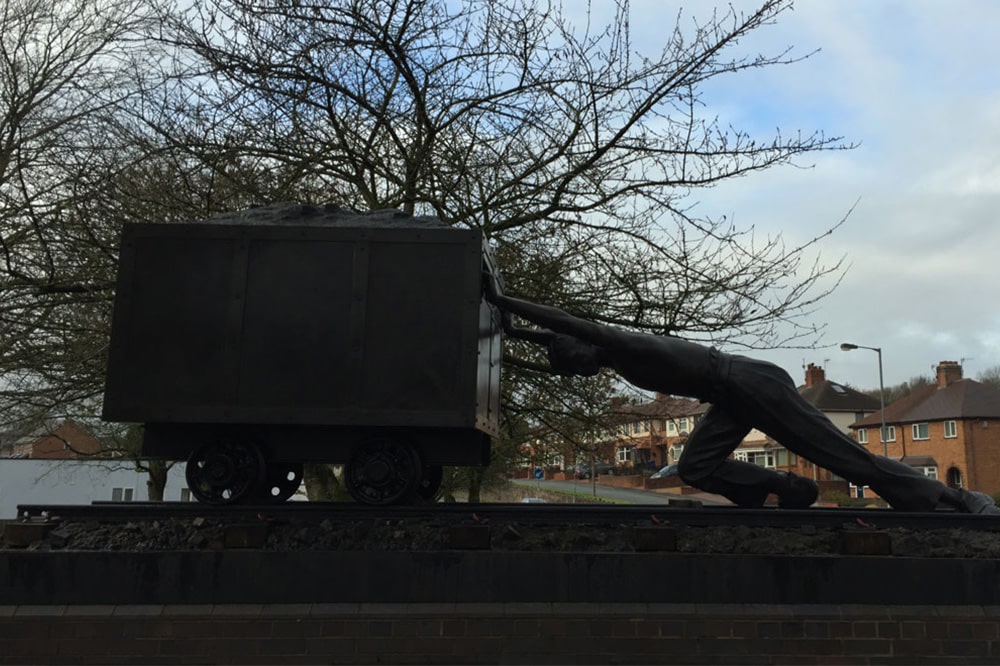

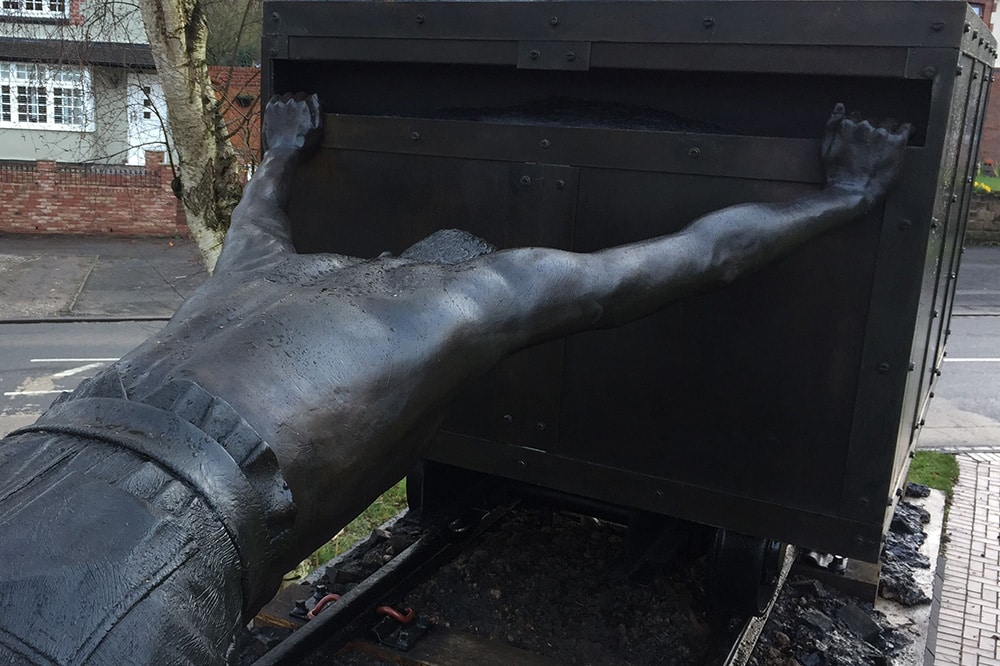
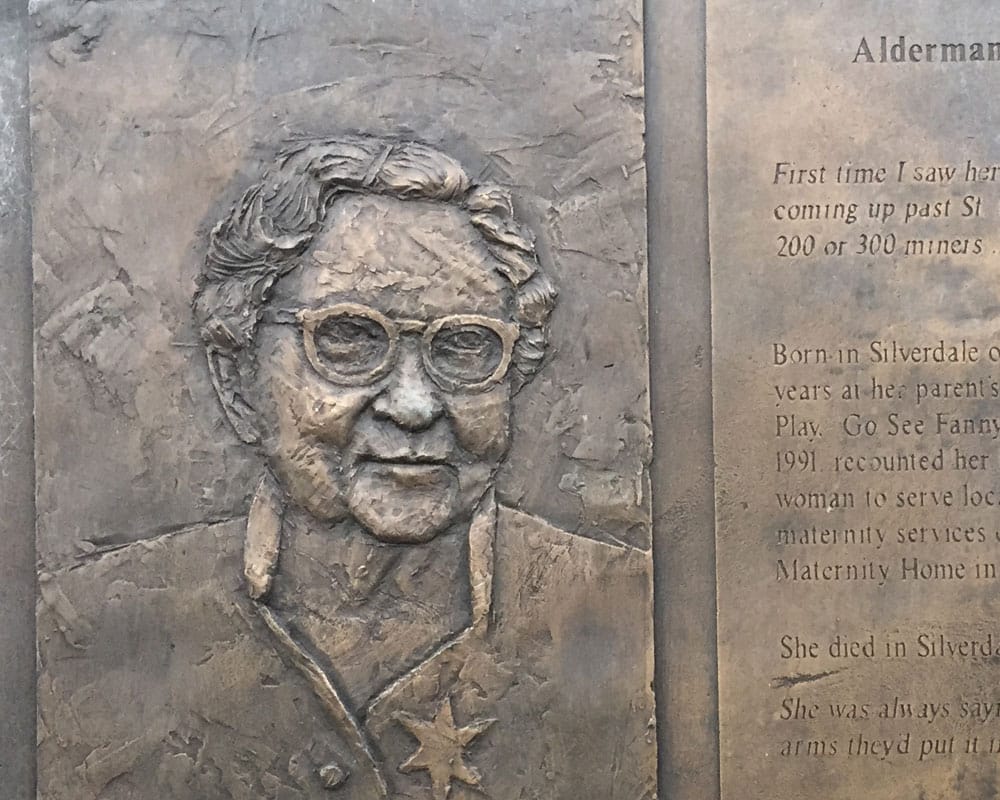
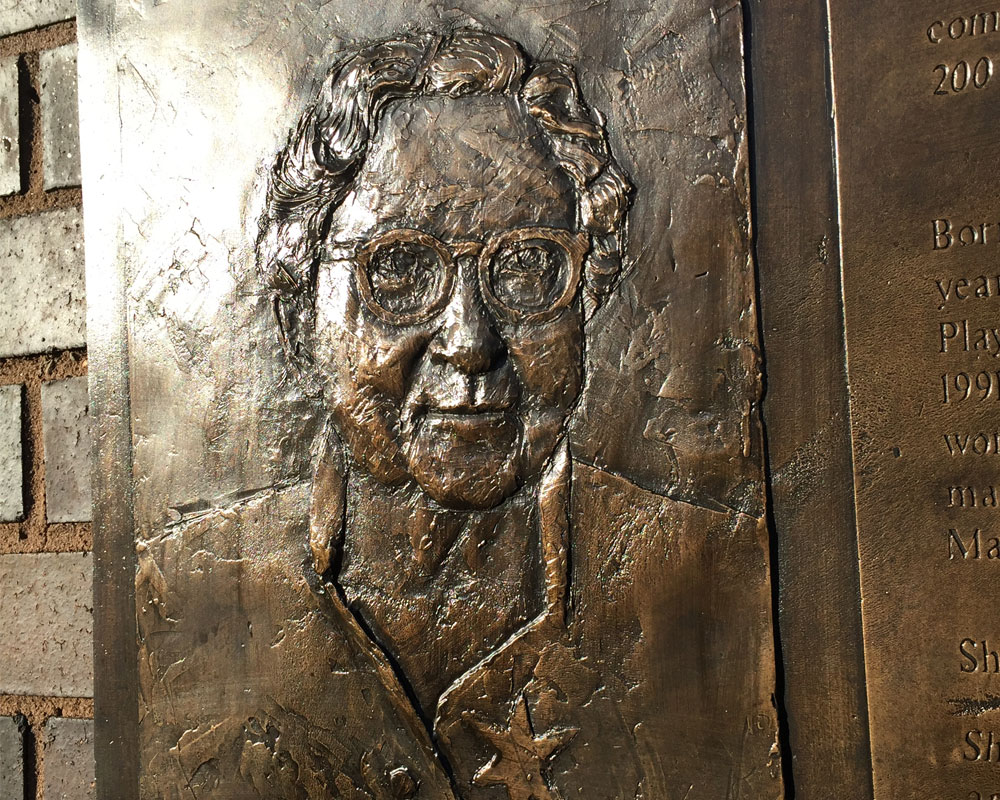
The Silverdale Mining Monument in Silverdale, Newcastle-under-Lyme is a large scale-bronze sculpture commemorating the Silverdale Colliery and the people who worked there. The sculpture has been on permanent outdoor display since 1996.
In 2020, some 24 years after its installation, Plowden & Smith was commissioned by Silverdale Parish Council to restore the bronze sculpture.
Following its careful deinstallation, the monument was transported to our London-based workshop for specialist sculpture restoration treatment.
A significant part of restoring the sculpture was our treatment of the significantly deteriorated coal wagon. This including fabricating a new and better-designed galvanised internal frame, hot waxing the original patinated brass outer cladding elements, shot blasting and repainting the original wheels and supporting beams; and restoring and painting the concrete coal mounted on the top of the wagon.
The bronze figure of the miner was hot waxed, as were the bronze plaques displayed around the sculpture’s brick plinth base. Hot waxing the bronze not only revives its appearance, but also provides an additional layer of protection from the elements – an important consideration with outdoor sculpture.
No detail of restoring this sculpture was too small to be overlooked: the rotten wood sleepers were replaced; the rails and chairs were shot blasted and repatinated – even the tiny chairscrews were shot blasted and patinated.
Finally, just prior to reinstallation, the brick plinth base was carefully cleaned to remove years of ingrained dirt and plant matter.
Find out more about our sculpture restoration services here, or to discuss a bronze restoration project
please get in touch
